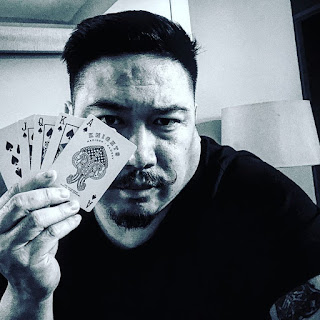Gilded Decks - A Quick History
A Quick History on Gilded Decks
What does "Gilded" actually mean?
The earliest known use of the word appears in 1540, meaning "covered or tinged with gold or a golden color" (source: Merriam-Webster), meaning gilded decks are ONLY those with gold edges. Silver, green, red, etc. would technically not qualify. That's the literal definition though. It has crossed over into other colors now, the same way the term "vintage" was taken from the wine industry and generalized to mean anything between 20-90 years of age.
So how far back in time are we talking here?
Gilded decks can be traced back to King Charles VI of France where he paid 56 sol for three decks of gold-edged cards. Check out this YouTube video here.
How do we know this?
In his book of accounts for 1392 or 1393, Charles or Charbot Poupart, treasurer of the household of Charles VI of France, records payment for the painting of three sets of cards. This is the earliest record of gold applied to a set of playing cards. We do not know what kind of gold lined these cards. Were they gold foil? Gold leaf? Gold ink? Unfortunately we may never know the answer, as these cards no longer exist.
A few centuries later we see gold edges again applied to playing cards as the Gilded Age arrives in the United States. According to playing card historians today, the earliest appearance of gilded playing cards were made by Samuel Hart in or around 1858. (Source: Hochman Encyclopedia, NY24, page 52). These decks are described as "having the standard Hart Faro courts as well as unusual one way courts identical to the ones shown on p.319 of Hargrave made by Charles Bartlett. The latter has square corners and gold edges and features a North American Indian on the backs."
Ramping Up Production
In 1883 the process of applying gold leaf to the edges of playing cards gets a major upgrade. Charles A. Wright patents a Card Gilding Machine (US Patent 290303, October 20, 1883) to mass produce gold edged decks. There is another patent for the same machine (also by C. A. Wright) on May 31, 1887 (US Patent 363936). This patent was later deemed invalid because of a lawsuit between Mr. Wright and A. H. Postel. The details of the case can be found here https://cite.case.law/f/44/352/ This helped pave the way for brands like "Extra Congress" (aka Congress 606), "Extra Bicycle" (Bicycle 808s with gold edges), Army and Navy 505 (Plain edged Army and Navy decks carried the 303 stock number), etc.
 |
| Later patent, declared invalid |
 |
| Original patent - upheld |
So thanks to Charles A. Wright and his invention, we can all appreciate gilded decks!
Examples of gold-edged decks:
 |
| Gold edges from Congress 606 "Jerry", ca.1907 |












Comments
Post a Comment